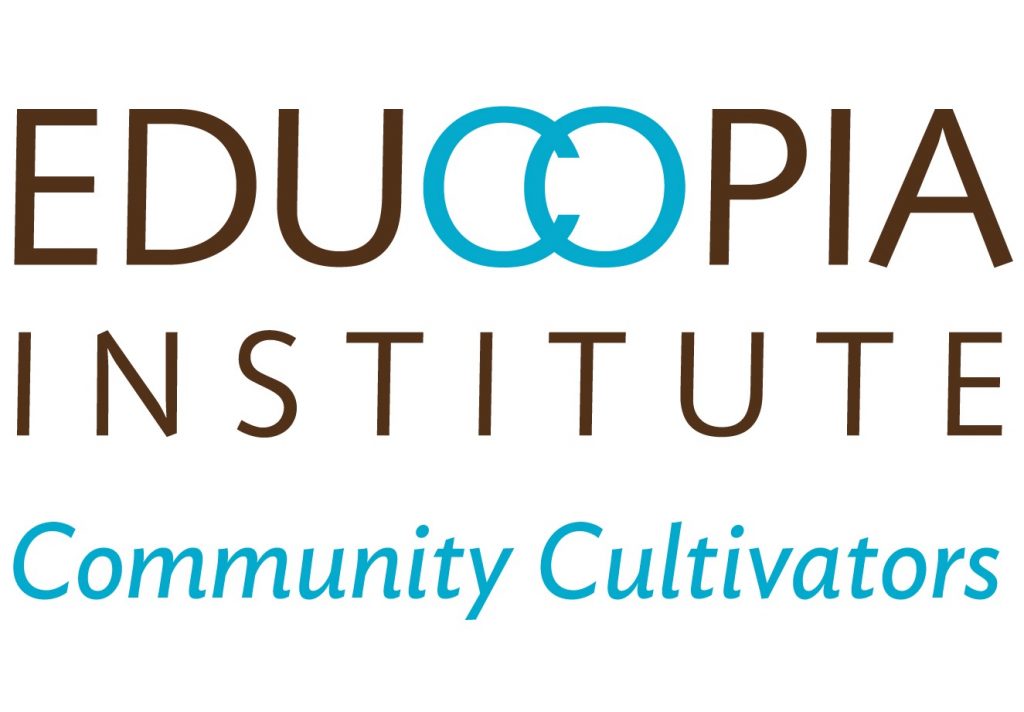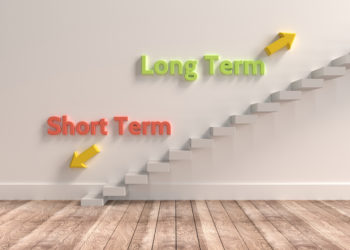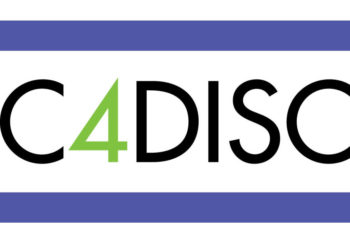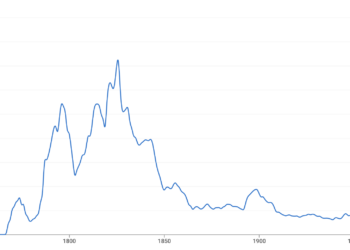For many of us, Katherine Skinner is synonymous with Educopia, the nonprofit organization she helped found in 2006, with a mission of empowering collaborative communities to create, share, and preserve knowledge. Since then, Educopia has gone from strength to strength, launching and leading important scholarly communications initiatives including the Library Publishing Coalition, and publishing research on a range of scholarly communications related topics — from digital preservation to continuing education, and more. Even closer to home, both for me personally and for SSP, through Educopia’s consulting services, Katherine and her colleague Melanie Schlosser provided pro bono support for the Coalition for Diversity and Inclusion in Scholarly Communications (C4DISC), working with the founding organizations to help us develop a governance structure before we officially launched.
Katherine stepped down as Executive Director of Educopia on September 30, 2022, recognizing that, as she put it in her July 18 announcement, “there is evidence that when an organization’s founders stick around for too long, their presence can begin to hinder the organization’s success. Founder-led organizations often begin with visionary leaders who can marshal resources and create a safe, secure atmosphere that appeals to funders and community members. If founders stay too long, though, their organizations tend to become too reliant upon and too influenced by the founders’ personalities, which can lead to stagnation and an unhealthy reciprocal dependence between the founder and the organization.”
I suspect that we all either know people who have stayed in post longer than they should — and/or are guilty of it ourselves! — so I’m very grateful to Katherine for sharing her thoughts on this and other reflections on her, and Educopia’s, journey.

Can you talk about how you got to where you are today?
My journey with Educopia started on October 6, 2006. The impetus came out of a slew of projects that we were working on at Emory University, where I was a graduate student getting my PhD in sociology and American studies. I completely stumbled into the library work; I loved libraries, but I certainly didn’t see myself in that space as a worker. But Martin Halbert, who was in my PhD program, and who was also director of Library Systems at Emory, landed two Mellon grants simultaneously, and was desperate for project management help. He had seen me give a paper on a summer project I’d done for the Smithsonian after my first year, and he reached out to see if I’d be interested in working on those grants. By the time I was in the third year of my PhD, I was full-time with Emory Libraries, and helped Martin build what, in hindsight, was a pretty incredible environment, balancing digital libraries and digital humanities projects and people. I brought my sociological background with me, and I continued to ask the same kinds of questions in our digital library work that I raised in my academic ventures: How do fields and institutions change over time? Systems are so often stable — what enables critical transitions to happen? I wanted to understand this in part because I was getting very worried about libraries as an institutional form.
What got me with the library work was realizing that the Internet was upending everything — and that the libraries hadn’t realized how much new competition was coming their way, including major corporate competition like Yahoo, and later, Google. The thought that libraries didn’t see the growing model of “digital information as commodity” as a threat absolutely shocked me — and then it galvanized me to help position libraries well, for whatever would be coming in this digital space.
The other thing that I brought with me was a strong interest in social movement theory and practice and how that could be applied in spaces that faced or needed significant institutional change. My academic research on music and social change helped me to see the power of different kinds of community formations that changed both the music industry and society over time – like freedom songs and the US civil rights movement, or women’s music and the lesbian-feminist movement. Innovations that started at the fringes of the field gained immense power when they were carried forward by networks of people, and those networks are almost always the key to change. With that in mind, I wanted to know, how do we build library communities that can compete with the Amazons or the Googles? How can we use the strength of our ability to collaborate, to tighten our networks, and really do things together? So that was the impetus for founding Educopia. That and Martin Halbert! When I told him, we need to write our dissertations and graduate, not found another 501c3, he said, no, I think we really need to found this organization. He was right, and I’m grateful!
We knew that our digital preservation network MetaArchive, which Educopia still hosts, needed a neutral meeting space that could hold and nurture community relationships while functioning independently from each of the member institutions. We also knew that MetaArchive wasn’t the only multi-stakeholder and deeply collaborative project that needed that kind of safe space for long-term partnership building. So we named the 501c3 Educopia, instead of MetaArchive, because we saw it as this kind of community hub. What we wanted to do on the one hand, was help with digital preservation and scholarly communication, which were already the two wings of our work; but we also wanted to build communities, and to be very deliberate about how we did that, so that there were good governance, engagement, and business structures in place.
In 2009, I moved fully over from Emory to Educopia, and we continued to focus primarily on MetaArchive and several research projects. Then a couple of years later, we helped the founders of the Library Publishing Coalition and the BitCurator Consortium, both of which approached us as a possible host and co-designer for their community models. I These both proved to be great matches, and they let us continue building toward that broader vision of what Educopia has now become! And you know it has been this mix of serendipity and opportunity, along with vision and direction. Educopia has become almost exactly what Martin and I, along with the rest of our board, hoped for at the very beginning, which was to create a space that focused on how to build healthy communities, and to do that in a way that didn’t privilege any one business model or governance model, but really looked at the specific needs of communities and met them with the scaffolding they needed for success.
What do you consider to be your legacy? What are you proudest of from your time at Educopia?
Legacy indicates something that I’m sure is going to stay and, for that, I would say the community cultivation model that we put together, which is the backbone of what we do at Educopia, and that the organization will continue to modify and build on. It’s a synthesis of more than a decade of work and research. My sociology never stopped; I continued to do lots of research on how communities were forming and what was being observed in other fields, and this model has distilled that research and Educopia’s lived experiences with dozens of different communities to provide a framework others can follow and learn from.
But the thing that I am currently the most proud of has gotten very little attention so far, which is the FOREST framework that Sarah Lippincott and I published earlier this year. A lot of my thinking over the last couple of years has continued to be around how you bring about system change. People have been trying for years to compare and contrast different businesses and different models. But we’re often comparing apples to oranges, and we’re often vilifying one thing and raising something else up, and binaries are just really not helpful.
I’ve been stumbling toward the pathway to FOREST as a potential solution to this problem for years. A key moment in that was when Mike Roy and David Lewis came to me in 2018 to ask me to join their Mellon-funded project called “mapping the scholarly communication infrastructure.” That project gave us a really important opportunity to build and test a census-based, data-informed approach to understanding the system we’re in. As one part of that project, we piloted a census tool with more than 40 institutions. It was designed as a broad-based analysis of scholarly communication infrastructure providers’ business frameworks and governance designs. It was also intended to surface their financial realities, including questions about year over year changes and reserves. It let us really see, maybe for the first time, that we think of some entities as being far more sustainable than they actually are, while we think of others as far less sustainable than they actually are. Historically, we have lacked that data, and so our beliefs in and attempts at “sustainability” have been often fueled by vague perceptions at best. And now Invest in Open infrastructure is taking some of the questions that we were asking there, plus many others, and is taking this work to the next level.
The other piece of this “pathway” to the FOREST framework was my longstanding interest in values and principles. There are all of these contemporary versions of values-based frameworks — POSI, of course, being one that that right now is maybe most prominent, and also the FAIR principles, CARE principles, and so on. But what do they actually accomplish? Do they “work”? Why haven’t they yielded the change that we seem to be trying to push for with them? I looked at the more than 100 manifestos and documents — everything from the Budapest OA Declaration to the Scholar-Led Manifesto that just came out. These sorts of manifestos are everywhere; a lot of them are really really good, and they have a lot of signatories. But arguably, they haven’t been able to bring about the changes they imagine, and I think that might be because they so often lack accountability mechanisms.
As part of our Arcadia-funded “Next Generation Library Publishing” (NGLP) project, we tried to distill down the values and principles that we found in those 100+ manifestos to see whether there is a common core — and there is. So then we tried to draw out how you can know if your practices match specific values and principles, and how you can know how to improve that match over time. Not just through a sort of self-nomination by a service provider or publisher or tool developer, and not just by checking a box, because that’s very black and white. What we wanted was a way of seeing and showing a spectrum of practices that encourage better alignment between values and actions.
And that’s what the FOREST framework does, which is why, of the things that I’ve helped to do in my career thus far, I think it may be the most important. The big question now is, as I step away from Educopia, which could have been the mouthpiece to push it through, what do we do with the framework. How do we make sure it still gets considered as a potential basis for some assessment that is missing right now in the field? I trust my NGLP and Educopia colleagues, and especially the framework’s lead author, Sarah Lippincott, to help keep this moving forward.
Can you tell us about the sustainability/ business models that Educopia has, and where you are on the sustainability journey?
I hate the term sustainability! It presumes that everything needs to stay, and it doesn’t. We need to be so much better at sunsetting things. I try to always use the term resilience, because building resilience into the things that we’re doing is something that I believe really strongly in. Figuring out how to help groups build the scaffolding they need to be resilient is a really big part of what Educopia has been doing now for a long time. It doesn’t mean that we’ve got the answers, but what we do have is a lot of curiosity about the types of models that are out there in other fields, and insights about how they apply into our field — we look at lots of examples and try to distill from that: What are some of the things that seem to be working? Why do some things fail? We use a lifecycle model, because resilience means different things,depending on where you are in a business lifecycle or in an ideation lifecycle. So C4DISC, for example, at the very beginning didn’t need to think about a whole lot of structures other than: What does membership look like, and how do you govern yourself? Then, as you get more instantiated, you have to figure out things like: What are we going to do with all our historical documentation? How can we make sure we transparently convey what it is that we are doing in terms of our governance and our business models? At each one of the stages of the life cycle there are different questions that you need to ask yourself — and Educopia’s gotten very good at asking questions and helping people to figure out where to find these answers.
So where does Educopia itself stand in terms of resilience? About five years ago, I realized that I would eventually need to leave; that founder syndrome was already percolating around the corners of what we were doing. But I couldn’t leave because we weren’t sustainable, we weren’t resilient (see me using the s word right there!). Educopia depended on me, or at least on the historical knowledge that only a few of our staff and board shared — and we should be eating the food we prepare, to quote Kathleen Fitzpatrick (President of the Educopia Board of Directors). So I started really putting us through the paces of our own community cultivation model by 2018. We identified lots of holes and gaps in that analysis, and we have been, if not filling them, at least conscious of which ones need to be filled and on what schedule since that moment. So by 2020, when I turned to Educopia’s Deputy Director, Jessica (Meyerson), then and told her that I thought we were looking at 18 months to two years to prepare Educopia and its affiliates for my departure, we were able to look at how much we had already done over the previous three years, and then really map out what are the remaining things to attend to. So while Educopia is not some perfect example of the community cultivation model in action, we are experienced in turning that model on ourselves and benefiting from it.
Is there an organization (or organizations) that you think is getting resilience as right as it’s possible (given that there’s no such thing as a perfect organization)?
Actually there are quite a few of them that are doing an admirable job of this, and they’re in different life cycle stages.
The Public Knowledge Project (PKP) is one that has been around for a very long time, and has had some very rocky times, but they’ve made some really smart hires recently, and they’ve restructured in ways that I think are going to be really really positive. They know they’ve got to get the technical debt healed that so many of their global partners, especially in the global South, are carrying. They have been aware and conscious at every step of their development since I started working with them of where their holes are, and they’ve been actively trying to fill them, and I think they’ve done an incredible job. I’m expecting really great things from them in the future, in part, because I think they finally have things situated and funded where they can make more strategic decisions than they’ve been able to in the past.
I also think Ubiquity Press is doing some really interesting stuff, so I take my hat off to Brian Hole. Again, there was a time when Ubiquity was under a lot of criticism for using open source software that was being developed in the community and the academy without paying for it or without contributing to it. And instead of bristling, and digging in heels or just avoiding engagement the way some businesses have, they engaged with the OS communities involved, and came to real agreements. The company has proven itself to be a player that may be a for-profit, but they’ve put in place all sorts of rules that make it very difficult for them to be sold out to a large conglomerate, and I have a lot of respect for that.
Then I’ll point to Hathi Trust as another example; some of it is Mike Furlough’s leadership. I think the model that they have for it is marvelous, and their responsiveness in a time of need showed how deeply they have been thinking about the social responsibility that they carry as an organization. Both from a business standpoint, and also from a mission-driven standpoint, that’s an organization that I have a lot of admiration for.
We can’t end without asking, what next?
I’ll miss my team — they are amazing! I had to get out of the way in part because as long as I’m there, nobody gets to know and appreciate who they are. It doesn’t matter how much I try, it really is just part of the way that a founder or director often gets treated. We are in the “limelight” and get credit for the work that many, many people in our organizations and communities are making happen. I can’t wait for others to really see the brilliance of the Educopia team.
What’s next for Educopia is all about that…the team will be moving full-speed-ahead, and they’ll be doing so with a new model of leadership. Educopia’s staff and board has been through an intensive development period over the last year. They deeply questioned what “leadership” can look like in an organization that makes a clear and serious commitment to social and economic justice. They evaluated a range of options and determined that a co-leadership model is the best match for Educopia’s ambitions and intentions. Three Educopians – Racquel Asante, Katherine Kim, and Jessica Meyerson – will be dividing the “Executive Director/CEO” responsibilities accordingly. They will do so thoughtfully, attentively, and interdependently, and in close collaboration with the Board and staff. As they said in their recent announcement, their commitment is to centering relationships, shared accountability, and collaborative power, and they’re evidencing this through every aspect of their leadership model.
But in terms of what’s next for me…I really don’t know! I needed to end this work as I began it, with both feet in. When I realized I couldn’t avoid “founder’s syndrome,” and that I was going to need to leave, I knew that wasn’t going to happen in the more traditional way where you go look for a job, and then you give your notice once you’ve found your next role.
What I do know is there’s going to be a lot of rest and definitely some period of discernment, and I know what I want from my next job, and I know what I want to bring to my next job. In terms of what I want to take from it. I don’t want to be the boss — really! — I want to work for somebody who I can learn from. I have had to teach myself, and find mentors, and just stumble my way through so many situations for the last 16 years, and it is a blissful thought that somebody else could teach me some things, in a relationship that is intended for that. And in terms of what I hope to bring, I think my default settings are to encourage and set the conditions for successful collaboration and alignment. I suspect wherever I land, I’ll bring a lot of energy, confidence, and deliberate scaffolding to collaborative engagements intended to meet some of our shared “wicked issues” in this complex, often fraught arena of scholarly communication and information management.
Is there a question that you wish I’d ask you that I haven’t?
Yes! How have people reacted, and what surprises have you had?
First, I didn’t expect people to be angry, and there were definitely some people who were angry with me for making this decision. I get that, and I’ve learned to be okay with it, but I don’t like making people angry; it’s not a happy place for me.
The most interesting reactions that I’ve gotten, though, are from a few other executive directors who have asked me: How did you do this? Because I want to, and I don’t know how to make it happen, so will you talk to me after you’re done? I can’t wait for those conversations! And one day, maybe, I’ll write about it…
Note: this post was updated on October 28 to change the date when Educopia applied its community cultivation model from 2017 to 2018.



